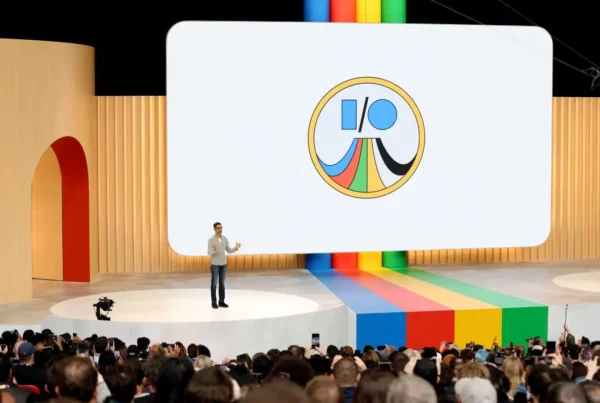Today, our smartphones are a veritable app ecosystem. We have shopping programs, financial institution software, government agency solutions, and marketplaces. It’s even difficult to navigate through so many options, even if you limit the use of apps.
A few years ago, a Chinese app explored the following idea: “What if we could do all of this in one program?”. Thus, the super app was born, an idea that has seduced even tycoons like Elon Musk.
Keep reading to understand more about this program and its features, as well as the differences in relation to the so-called mini apps.
What is a super app?
According to Gartner’s forecast, by 2027 more than 50% of the global population will be made up of active users of super apps. In addition, more than 60% of respondents in the United States alone admitted that they would like to have multiple experiences in such an application.
Super apps are robust and creative applications that bring together several functionalities in one place. In this way, the user is able to solve more than one problem at once, without having to switch interfaces in different applications.
They have gained space in the market because they are accessed with high recurrence — after all, the customer spends a lot of time on them, taking advantage of their various functionalities. Therefore, they are referred to as integrated digital ecosystems.
The main objective of this type of application is to eliminate the need to download a series of programs to carry out routine activities for individuals and companies. With it, the user has a “super program” in which he centralizes his activities and is more practical.
What was the first super app?
The first application to adopt this “super program” profile was the Chinese WeChat. It was initially developed as a text and voice app, but it fell in love with people and became part of the routine of millions of users in China.
This is because it works very similarly to WhatsApp, with the exchange of instant messages, but it also allows the user to send and receive payments, make purchases, and use discount coupons, for example.
WeChat became a craze for providing the Chinese, and later to other users around the world, with a centralized experience in a super app. People no longer needed to navigate through multiple programs, saving time.
If the concept seems familiar, it is because in the US we already have examples of super apps, such as Uber, Amazon, PayPal, Square, and Google.
Amazon offers a wide range of services under one platform. In addition to its e-commerce site, Amazon offers streaming video and music services, grocery delivery, and even home security services. And PayPal is primarily known as a payment processing platform, but it has expanded into other areas as well. The company now offers credit products, peer-to-peer payments, and even cryptocurrency trading.
When billionaire Elon Musk bought Twitter, in a process completed in October 2022, he expressed a desire to turn the platform into a super app. And this generated more buzz and expectations regarding this type of format.
How does a super app work?
Apps have made people’s lives a lot easier. After all, today, it is not always necessary to be on a desktop computer or a notebook to access the services of banking institutions, make purchases and resolve pending issues. Everything can now be done via smartphone.
However, it can still be stressful having to navigate through multiple solutions, clogging up your phone’s memory, and having to deal with updating too many apps. In this sense, people would benefit from a centralized application that promotes several functionalities at the same time.
It was to explore this vacuum in the market that super apps emerged, as these programs are capable of performing different functions that, many times, are not related to each other. In this way, they are versatile solutions, as they allow the user to solve a multitude of problems.
An example of this is that the user has at his disposal, in a single program, several different services that are part of his routine, such as payment of bills from banking institutions and online purchases.
In addition, super apps reduce the number of steps when confirming transactions, such as bank transfers, and also promote discounts on purchases — all in the same application.
The idea behind the super app is that users can access multiple resources without having to download more than one application, leaving the interface of their mobile device cleaner and without having to worry about updates and different programs that consume the memory of a smartphone, for example.
What is the difference between a super app and a mini app?
To be a super app, the program has to be useful to the user on different levels. Therefore, if the person has to look for several other services in scattered applications, this solution does not qualify as a super app.
Contrary to what many people may think, the mini app is not represented by traditional apps, but it is also another trend. Also known as micro apps, they serve to complement the big ones, offering all the support necessary for the user to solve their pending issues.
There is no app store or separate marketplace for mini apps. They are discovered and activated by super app users and once used they can also be easily removed from the UI.
In general, mini apps are developed to complete one or more specific tasks of a larger app, such as the functionality to contract services, buy a product, make donations, and rent something, among others.
For a more robust system to exist and be efficient, it needs to be combined with specialized services ready to help you meet specific verticals.
Thus, large companies can team up with mini app developers to occupy a larger share of the market — or produce these solutions internally, which is more expensive.
It is in this logic that micro apps work, as a complementary alternative and a tool with solutions prepared to integrate in a quick and practical way with larger interfaces.
Super apps vs mini apps: competitors or allies?
Although super apps concentrate a multitude of functions, mini apps are exploited to make certain functions faster and also in an open innovation context, in which one company allies with another to gain access to more business verticals.
Therefore, as we saw in the article, the super app is not necessarily a competitor to the mini app. A company that launches a super application can launch a more specific solution to prevent the “super program” from becoming too heavy and slow for users, for example.
The proof that the two solutions are not competitors is that WeChat itself has launched mini apps to complement the super app. Both technologies dominate China, but they have everything to dominate the world market, as shown by Elon Musk’s interest.
Mini apps can be explored by specialized startups that want to explore specific solutions. Now that you understand the difference between these two possibilities, you can explore them in your own business, according to your needs and preferences.
Read other content on the blog and learn more about BRQ’s services and solutions!





